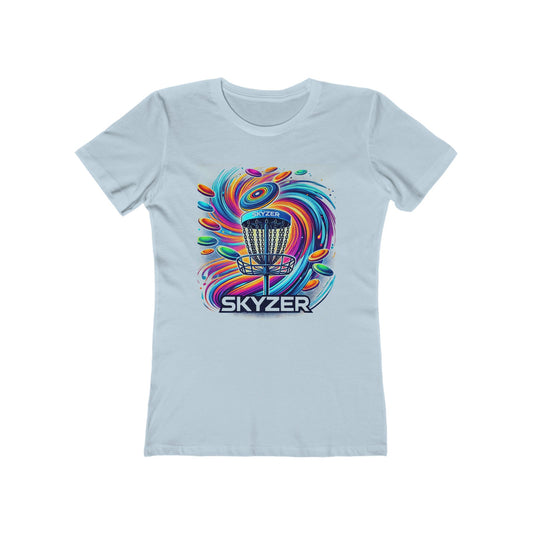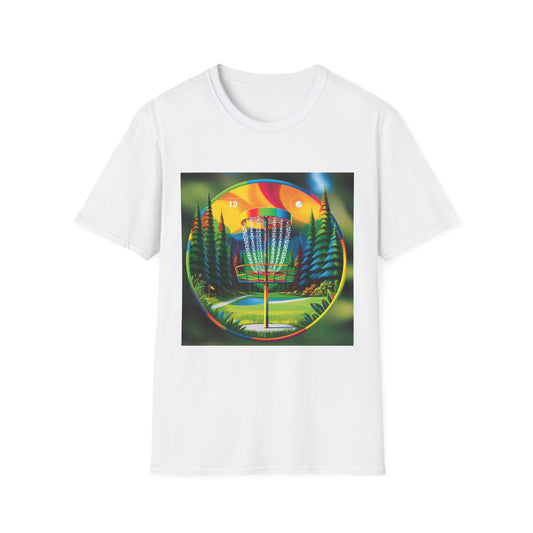
The Origins and Evolution of Disc Golf
Share
Disc golf has its roots in the early days of the flying disc revolution of the 1960s and 1970s. Inspired by the success of Frisbee games, enthusiasts began experimenting with new ways to play outdoors, eventually coalescing around the concept of throwing discs into designated targets.
A Brief History
-
Beginnings: The game began as an informal activity among friends, evolving from simple games of catch to structured competitions. Early pioneers crafted makeshift targets with objects like trees, trash cans, and even old baskets.
-
Formalization: In the 1970s and 1980s, the sport gained momentum as clubs formed and organizations like the Professional Disc Golf Association (PDGA) were established to set rules and promote competitions.
-
Modern Era: Today, disc golf features standardized courses, custom-designed discs, and international tournaments. It is celebrated for its accessibility—most people only need a set of three different discs and an open-minded approach to the outdoors.
As the sport evolved, so did its appeal, offering an inviting challenge for all ages and abilities.
Understanding the Basics of Disc Golf
Rules and Objectives
At its core, disc golf is straightforward. The objective is to complete each hole on a course in the fewest number of throws possible. Players stand at a designated tee area and aim to reach a target—a metal basket with hanging chains—in as few throws as they can.
-
Tee Throws: Each hole begins from a tee area. Players must release their disc from within the teeing zone, with each throw adding to their total hole score.
-
Approach Shots and Putt: Once in play, players continue to throw from where the disc lands until they reach the target. When in close range, players often transition to a controlled putting technique, aiming to get the disc into the basket.
-
Scoring: Similar to traditional golf, the objective is to minimize the number of throws. Each additional throw counts as a stroke, with the best players often boasting low round scores across 18 holes or more.
Essential Equipment
A well-rounded disc golf bag typically holds three types of discs, each with its unique purpose:
-
Driver:
-
Purpose: Designed for long distances off the tee.
-
Characteristics: Drivers have a slim profile and a sharp edge, designed to slice through the air for maximum velocity.
-
-
Mid-Range Disc:
-
Purpose: For shots requiring precision over medium distances.
-
Characteristics: These discs are less aerodynamic than drivers, offering a greater degree of control and stability.
-
-
Putter:
-
Purpose: Used for the final shot into the basket.
-
Characteristics: Putters are built for accuracy and a reliable flight path even at slower speeds.
-
Aside from discs, new players often invest in a quality bag, comfortable clothing suited for the outdoors, and, occasionally, markers or towels to manage disc grip and cleanliness.
Techniques and Strategies for Success
Disc golf may appear simple, but success on the course relies on refined technique and a solid game plan. Here are some key considerations:
Mastering the Throw
-
Grip and Stance:
Finding a grip that feels secure yet flexible is crucial, as is establishing a comfortable stance that maintains balance and stability during the throw. Experiment with different grips until you discover one that suits your style and the disc’s design. -
Throwing Mechanics:
A smooth, controlled release plays a significant role in accuracy and distance. Practice your backswing, focus on body rotation, and follow through to ensure that your disc flies as intended. -
Practice Routine:
Consistency stems from repetition. Spend time practicing on open fields or designated practice areas to fine-tune your technique. Many courses also offer rugged, varied terrains to help you adapt your throw to different conditions.
Strategic Play on the Course
-
Course Management:
Every course is unique, characterized by its own obstacles—trees, water hazards, and uneven terrain all influence shot selection. Planning your route involves not only measuring distance but also anticipating environmental challenges. -
Adapting to Wind Conditions:
Wind can drastically alter the flight of a disc. Learning to adjust your throw, whether by altering your form or selecting a different type of disc, is a key skill. Experienced players study wind patterns and often use the environment to their advantage. -
Mental Game:
The mental aspect of disc golf is just as important as physical skill. Staying relaxed, focused, and adaptable can help overcome the occasional bad throw or course setback. Visualization exercises and pre-round routines are common among competitive players.
The Community and Culture of Disc Golf
Disc golf is more than just a sport—it’s a community. Players of all ages and skill levels gather in parks, courses, and tournaments, forming bonds over their shared passion.
Inclusivity and Social Impact
-
Community Building:
Many local disc golf clubs offer regular meetups and leagues, providing an opportunity for both competitive play and casual fun. This inclusivity makes disc golf a perfect activity for family outings, social gatherings, and community events. -
Accessibility:
One of the appeals of disc golf is how accessible it is. With minimal equipment needed, almost anyone can start playing without significant investment. Public courses in parks and recreational areas further democratize access to the sport. -
Mental and Physical Benefits:
Regular play can enhance physical coordination, promote cardiovascular health, and even reduce stress levels. The sport encourages players to get outside, engage with nature, and enjoy some light to moderate exercise without the pressure of high-stakes competition.
Tournaments and Competitive Play
For those looking to take their game to the next level, competitive disc golf provides a structured environment to challenge oneself against others. Tournaments range from local club events to international championships, offering opportunities for prize money and recognition. With the PDGA providing guidelines and organizing national rankings, serious players can measure their skills on a broader scale.
Tips for Newcomers: Getting Started in Disc Golf
If you’re new to disc golf, the following tips can help ensure a smooth introduction:
-
Rent or Borrow Before Buying:
Many parks and recreation centers offer rental sets for beginners. Experimenting with different discs can help you understand what type suits your throwing style best. -
Take a Lesson or Join a Group:
Many communities have local clubs or experienced players who host clinics or group sessions. Learning the fundamentals directly from seasoned players can accelerate your progress and boost your confidence. -
Start Slow and Focus on Fun:
The beauty of disc golf lies in its flexibility. Don’t be intimidated by seasoned pros or complicated course layouts. Enjoy the journey, celebrate small victories, and gradually build your skills. -
Stay Safe and Respect the Environment:
Always be aware of your surroundings—both for your safety and to protect the natural environment around the course. Follow local rules, respect wildlife, and leave no trace behind.
The Future of Disc Golf
Disc golf is poised for further growth as its popularity continues to surge. With more courses being constructed around the world and a growing influx of new players, the sport is on track to become a mainstay among outdoor recreational activities.
-
Innovation in Equipment:
Manufacturers are constantly evolving disc designs, incorporating new materials and flight dynamics that offer players more control and distance. This continual evolution keeps the game dynamic and interesting. -
Technological Advancements:
Modern technology is entering the arena through apps that help with score tracking, course mapping, and even disc flight simulations. These tools not only assist players in improving their game but also foster a broader sense of community through shared online experiences. -
Increased Media Coverage:
As disc golf attracts more international attention, media outlets and social networks are playing a larger role in highlighting tournaments, player achievements, and the social impact of the sport. This increased visibility further cements its role as both a competitive and recreational activity.
Final Thoughts
Disc golf is a multifaceted sport that combines technical skill, strategic thinking, and social interaction. Its accessibility allows players from all walks of life to find enjoyment and challenge in the game. As courses continue to pop up in parks, schools, and recreation areas, disc golf not only promotes physical activity but also fosters community engagement and environmental appreciation.
Whether you’re looking to improve your throw, join a competitive circuit, or simply enjoy a leisurely day outdoors, disc golf offers a rewarding experience that evolves as you progress. So grab a disc, head out to your local course, and discover why millions have fallen in love with the game of disc golf.
Happy throwing and enjoy the flight!
























